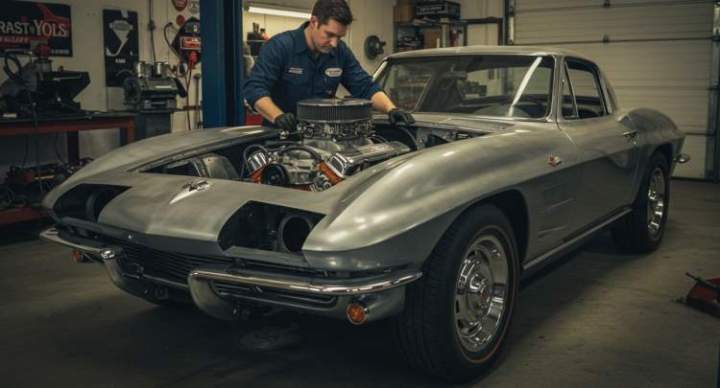What Factors Affect the Cost of Restoring a Classic Corvette?

Restoring a classic Corvette involves various factors that can influence its overall cost. At Harbor Auto Restoration, we break down the key elements that impact the price of your restoration project.
Condition of the Car
The starting condition of the classic Corvette plays a significant role in determining the cost of restoration. A car with minimal rust, structural damage, and mechanical issues will cost less to restore than one with severe corrosion or a damaged frame. The more repairs and replacements needed, the higher the cost. For example, a car with rusted body panels or a weakened frame will require extensive work to bring it back to its original state. In contrast, a Corvette in relatively good condition might only need cosmetic enhancements and minor mechanical repairs, which are less expensive.
At Harbor Auto Restoration, we conduct a thorough inspection of the car's body, frame, and engine before providing an estimate. The more work needed, the more materials and labor will be required, driving up the price. It’s crucial to assess the car’s starting condition carefully, as significant repairs or replacements will increase the restoration budget. A comprehensive evaluation ensures that you are fully aware of the scope of work and associated costs, allowing you to make an informed decision about your restoration project.
Parts Availability and Sourcing
The availability of parts is another crucial factor that can affect the cost of restoring a classic Corvette. Some older Corvette models, particularly rare ones, may have components that are no longer in production. Sourcing original, authentic parts can be time-consuming and expensive, especially if you’re restoring a rare or highly sought-after model. Even if aftermarket parts are available, they may not perfectly match the original components, which can impact the vehicle’s overall authenticity and value.
At Harbor Auto Restoration, we help clients find rare parts through our extensive network of suppliers and vintage car specialists. However, sourcing these parts often adds to the cost, particularly if the parts must be custom-made or imported. Furthermore, parts that are difficult to source may take longer to acquire, potentially leading to delays in the restoration timeline. By understanding the availability of parts, we can give you a clearer estimate of both the time and cost required to complete the project. This transparency ensures that you can plan accordingly and avoid any surprises along the way.
